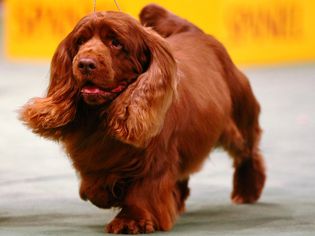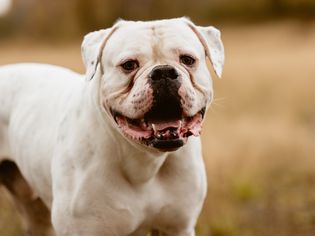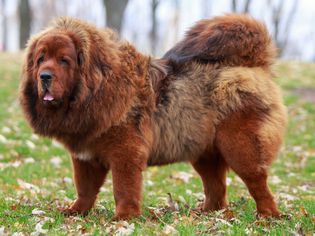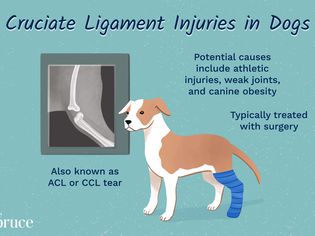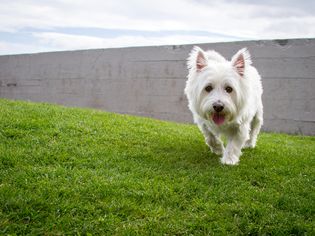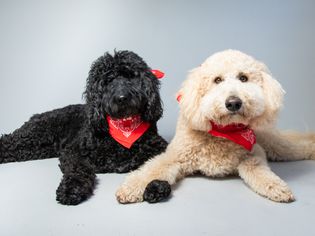The Karelian bear dog is a medium-sized spitz dog breed popular in Finland and best known for their courageous ability to hunt large and sometimes dangerous game. They're also known for their thick, dense coat, small eyes, and signature spitz tail that curls up over their back.
The Karelian is known to keep bears away from human-inhabited areas of state parks, but this is not a breed that shows up often as a pet in American households.
Learn all about the Karelian bear dog, including their history, temperament, care needs, and more.
Breed Overview
GROUP: Working
HEIGHT: 19 to 23.5 inches
WEIGHT: 44 to 49 pounds
COAT: Dense and short
COAT COLOR: Black with white markings
LIFE SPAN: 11 to 13 years
TEMPERAMENT: Cautious, independent, loyal, territorial, brave, tenacious
HYPOALLERGENIC: No
ORIGIN: Northwestern Europe
Characteristics of the Karelian Bear Dog
The most notable characteristic of a Karelian bear dog is their fearlessness. Though not a large canine, this dog is bred to corner huge and frightening animals, but not to kill them, which can make this breed an excellent guard dog or watchdog. They’re silent hunters who hunt various animals and mark game by barking.
The Karelian is highly spirited and energetic, which often can overwhelm new dog parents. The breed is also very loyal and protective of family, but care should be taken when the dog is in the presence of young children.
Karelian bear dogs are affectionate and may cuddle with you when they are ready to relax and rest after letting their energy out through play.
| Affection Level | Medium |
| Friendliness | Medium |
| Kid-Friendly | Low |
| Pet-Friendly | Medium |
| Exercise Needs | High |
| Playfulness | High |
| Energy Level | High |
| Trainability | High |
| Intelligence | High |
| Tendency to Bark | Medium |
| Amount of Shedding | Medium |
History of the Karelian Bear Dog
The Karelian bear dog is an ancient dog breed that shares its ancestry with the now-extinct Komi dog. Being an ancient dog breed, it has been difficult for experts to determine the specifics of the breed's origin. However, evidence suggests that the Karelian bear dog may have originated in Northwestern Europe and was used by Finnish and Russian farmers and hunters because of the breed's hunting skills.
This breed is uncommon in the U.S. but is one of the top 10 most common breeds in Finland. In the U.S., Karelian bear dogs are used by wildlife agencies, as well as state park and ranger services in Alaska, Colorado, Montana, Nevada, and Washington, for bear control. The Wind River Bear Institute, which aims to reduce human-caused bear mortality and conflicts worldwide, also utilizes Karelian bear dogs to teach the bears to stay away from areas populated by humans.
The Karelian bear dog breed is rare enough that it was placed into the American Kennel Club's Foundation Stock Service, which is a breed registry specifically for the documentation of rare breeds within the U.S. Owners of rare breeds work to get the dogs recognized in the U.S. by logging the birth and parentage of each dog.
The breed was allowed to start competing in AKC companion events in 2008, but there are still only a few hundred Karelians in the U.S.
Karelian Bear Dog Care
Though a Karelian bear dog can be affectionate and loyal, the dog is still considered wilder rather than domesticated. If you are bringing a Karelian into your home, it's important to begin socialization at a young age because of the hunting aspect of the dog's personality.
Fortunately, even without a bear to hunt or a farm to guard, there are plenty of opportunities to keep a working dog like the Karelian busy.
Exercise
Karelians are energetic, athletic, and have a tenacious work ethic, so providing them with daily exercise and a job to do is extremely important; it does not necessarily have to be in the form of productive work but can include focused play. One to two hours of exercise per day is recommended.
hThe dog will need a vigorous daily walk of one hour, and keep your Karelian on a leash during the walk to ensure they don’t go after other animals if their prey drive and hunting instinct kicks in.
However, the dog will need much more daily exercise than one walk. Offer a Karelian activities such as:
- Dog puzzle toys
- Scent work
- Rally obedience
- Agility training
- Long exploratory hikes
Grooming
The Karelian requires basic grooming but with a bit more attention on their all-weather coat that is short but dense.
The coat only requires minimal grooming. Brushing once to twice weekly to remove loose fur and prevent matting, along with the occasional bath, will keep your dog looking their best.
As with other dog breeds, nails should be trimmed every three to four weeks as needed.
Training
This breed is intelligent, and when trained with consistency and patience, the dog learns quickly. Karelians respond well to positive reinforcement with toy and food rewards, a stable routine, and lots of love.
It’s important to socialize these dogs early in their lives because they’re territorial toward other males. They are also naturally reserved around strangers, so socialization will help with that, too.
Common Health Problems
There are no genetic or common health problems known to be directly linked with this breed. That said, Karelian bear dogs are susceptible to certain conditions that affect all dogs, such as:
- Hip dysplasia: This is lameness caused by abnormal development of the hip joints
- Cataracts: This is loss of vision due to cloudiness developing in the lenses of the eyes
Annual vet visits will help your pet maintain optimum health and prevent and recognize any problems sooner. If you intend to buy a Karelian from a breeder, ask about any health tests given to the parents.
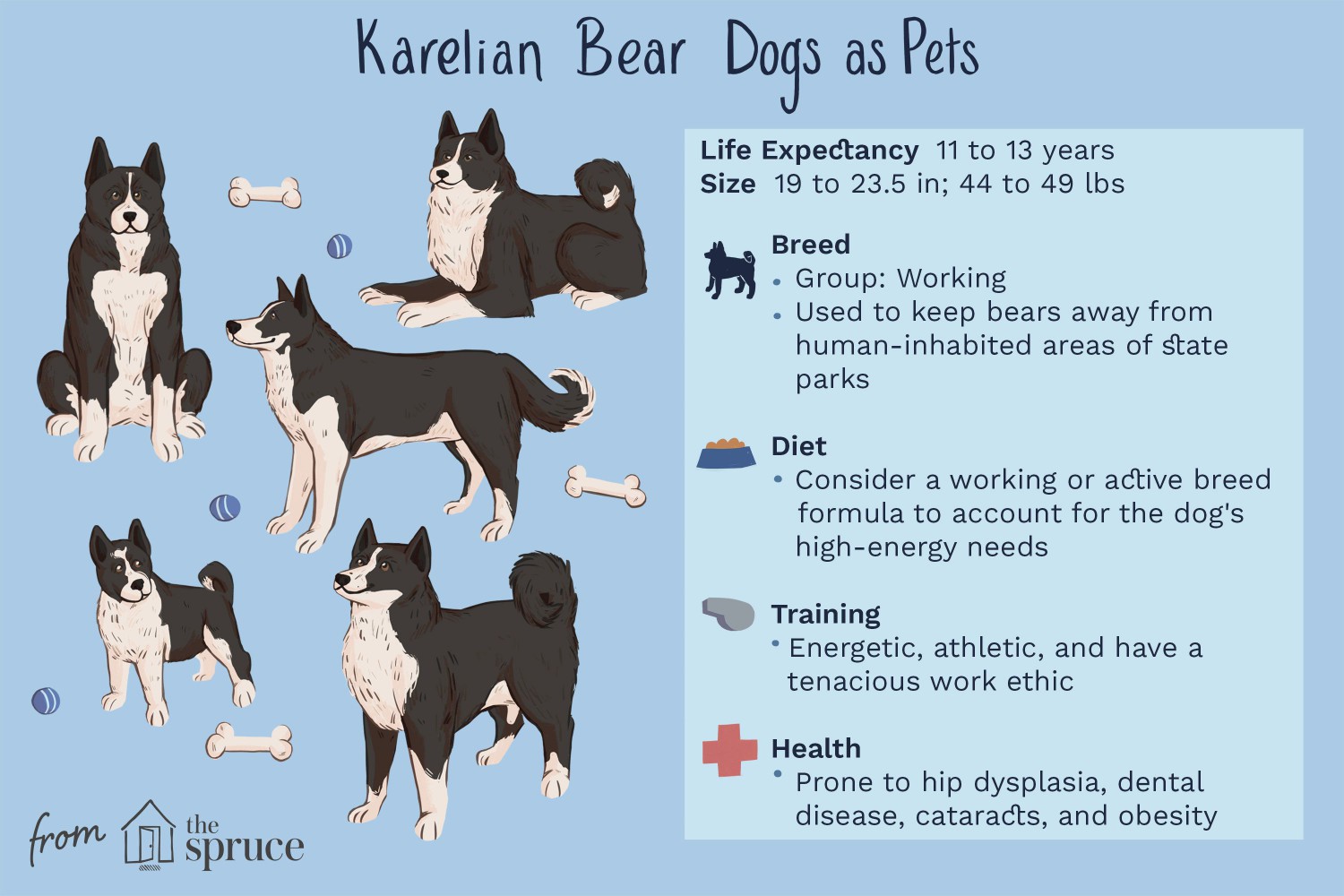
The Spruce / Emilie Dunphy
Diet and Nutrition
The Karelian bear dog should be fed high-quality dog food, whether commercially manufactured or home-prepared, with your veterinarian’s supervision and approval.
Any diet should be appropriate to the dog's age and activity level. Because this breed is very active, consider a working or active breed formula to account for the dog's high energy needs.
Always make sure that they have clean and fresh water that's easily accessible and available. Check with your veterinarian if you have any questions or concerns about your dog's weight or diet.
Where to Adopt or Buy a Karelian Bear Dog
The Karelian bear dog is not a common breed found in the U.S., so finding one for a pet might be difficult. If you find a breeder, expect to pay approximately $1,700.
Here are some sources that may help you start your journey to finding a Karelian:
- American Karelian Bear Dog Alliance
- AKC Marketplace
Karelian Bear Dog Overview
The Karelian bear dog is a fearless and protective breed that can make a good guard dog. They are affectionate with family but require a lot of exercise, training, and socialization, so they aren’t right for inexperienced dog parents.
Pros of Karelian Bear Dogs
- No breed-specific genetic health issues
- Protective nature and excellent watchdog
- Intelligent and fairly easy to train
Cons of Karelian Bear Dogs
- Needs a lot of exercise for high energy level
- Bred to be naturally aggressive, requiring socialization
- Not suitable for apartment dwellers
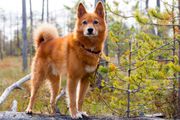
More Dog Breeds And Further Research
Before you decide on a Karelian bear dog, be sure to do plenty of research and involve your entire family in the decision. Learning more about the intricacies about this breed helps set both your family and the dog up for success.
Does your lifestyle correlate with this breed’s traits? Do you have the time to provide the physical and mental exercise needs for this dog? Will this dog be a good fit for your family? Also, remember this breed may be difficult to find in the U.S.
If you’re interested in the Karelian bear dog, consider researching similar breeds:
- Finnish Spitz
- Norwegian Elkhound
- Norwegian Buhund
There’s a whole world of potential dog breeds out there—with a little research, you can find the right one to bring home!
- Are Karelian bear dogs good family dogs?
A Karelian isn't considered to be a very popular family dog simply because they're bred to be a naturally aggressive and stealth hunter. This can result in a dog that's suspicious toward other animals and strangers. A Karelian also may play too rough with very small children, though this breed is rarely known to bite humans. If the dog isn't highly socialized and trained, they may also chase youngsters they consider prey.
Are Karelian bear dogs rare?Although the Karelian bear dog is rare in the United States, it is a common dog breed in Finland.
Why is a Karelian bear dog considered higher in intelligence than other breeds?The Karelian is said to be extremely smart, but that's probably because they tend to remain intensely focused on the task at hand. The dog is a silent hunter until they trap prey. One of their greatest skills is that they can communicate to their master the type of animal they located just by using a specific bark.


